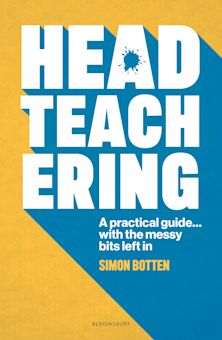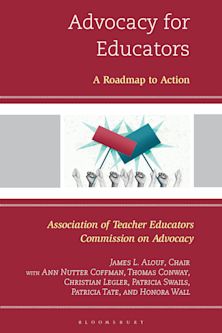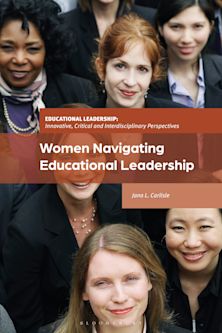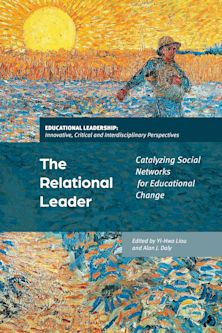- Home
- ACADEMIC
- Education
- Leadership and Management
- Balancing Change and Tradition in Global Education Reform
Balancing Change and Tradition in Global Education Reform
You must sign in to add this item to your wishlist. Please sign in or create an account
Description
In Balancing Change and Tradition in Global Education Reform, Rotberg brings together examples of current education reforms in sixteen countries, written by "insiders". This book goes beyond myths and stereotypes and describes the difficult trade-offs countries make as they attempt to implement reforms in the context of societal and global change. In some countries, reforms are a response to major political or economic shifts; in others, they are motivated by large upsurges in immigration and increased student diversity. Irrespective of the reasons for education reform, all countries face decisions about resource allocation, equality of educational opportunity across diverse populations, access to higher education, student testing and tracking, teacher accountability, school choice, and innovation.
The essays in this volume reveal:
·the policy choices about the school reforms made by countries throughout the world
·the consequences associated with these choices
·the role that societal values, historical antecedents, and political structures play in facilitating or constraining reform
Balancing Change and Tradition in Global Education Reform is an invaluable resource for policymakers, faculty, students, and anyone interested in how decisions made about the education system ultimately affect the quality of education, educational access, and social justice.
Table of Contents
Part 2 Preface
Part 3 Part I: Dramatic Political/Economic Change
Chapter 4 1. China: Turning the Bad Master into a Good Servant
Chapter 5 2. Russia: Struggling with the Aftermath
Chapter 6 3. South Africa: Overcoming Past Injustice
Chapter 7 4. Chile: Vouchers and Beyond
Chapter 8 5. Germany: After Reunification
Part 9 Part II: Letting Go
Chapter 10 6. France: Diverse Populations, Centralized Administration
Chapter 11 7. Turkey: Innovation and Tradition
Chapter 12 8. Sweden: A Welfare State in Transition
Chapter 13 9. Israel: From Egalitarianism to Competition
Chapter 14 10. Japan: Encouraging Individualism, Maintaining Community Values
Part 15 Part III: Transitions
Chapter 16 11. Singapore: Schools in the Service of Society
Chapter 17 12. Canada: A Multicultural Policy
Chapter 18 13. New Zealand: Empowering Teachers and Children
Chapter 19 14. England: New Governments, New Policies
Chapter 20 15. Australia: The Challenges of Poverty, Pedagogy and Pathways
Chapter 21 16. United States: America's Orgy of Reform
Part 22 Concluding Thoughts: On Change, Tradition, and Choices
Part 23 Index
Part 24 About the Contributors
Part 25 About the Editor
Product details
| Published | 13 Aug 2004 |
|---|---|
| Format | Ebook (Epub & Mobi) |
| Edition | 1st |
| Extent | 454 |
| ISBN | 9781610481328 |
| Imprint | R&L Education |
| Publisher | Bloomsbury Publishing |
About the contributors
Reviews
-
The book is, in essence, a world tour of public education in the early 21st century. For every teaching and learning issue that divides this country, the book shows that several other countries are having the same argument. For every cry of despair at the assorted failures of American schools, Rotberg introduces a host of nations-including some that American critics admire-who are hearing the same complaints about their education systems from their own experts.
Jay Mathews, Washington Post columnist, The Washington Post
-
?the chapters are...lucid, accessible, and insightful, and the concluding chapter is a thoughtful synthesis of the themes that weave throughout the book....Rotberg gets the editing business right; as a result, education policy makers, scholars, and practitioners interested in comparative education reform will find the book's sum is greater than the individual parts.... I recommend the book because the individual case studies are informative. Reading Balancing Change and Tradition in Global Education Reform is like being on an interesting, sixteen stop, world study tour. I also recommend the book because Rotberg carefully and thoughtfully pieced together the concluding chapter. Readers who read the book from beginning to end will still be processingthe sixteen stories and the wide-ranging content as they begin the final chapter. By identifying the themes that weave throughout the chapters, Rotberg helps the reader make sense of this worldwide intellectual journey. ... Rotberg does more than identifythe themes; she illuminates them by constantly referencing the most essential points made by the individual contributors. What results is a theme, example, example, theme, example, example rhythm that provides readers with a thoughtful, manageable, and m
Ron Byrnes, Teachers College Record
-
…the chapters are...lucid, accessible, and insightful, and the concluding chapter is a thoughtful synthesis of the themes that weave throughout the book....Rotberg gets the editing business right; as a result, education policy makers, scholars, and practitioners interested in comparative education reform will find the book's sum is greater than the individual parts.... I recommend the book because the individual case studies are informative. Reading Balancing Change and Tradition in Global Education Reform is like being on an interesting, sixteen stop, world study tour. I also recommend the book because Rotberg carefully and thoughtfully pieced together the concluding chapter. Readers who read the book from beginning to end will still be processing the sixteen stories and the wide-ranging content as they begin the final chapter. By identifying the themes that weave throughout the chapters, Rotberg helps the reader make sense of this worldwide intellectual journey. ... Rotberg does more than identify the themes; she illuminates them by constantly referencing the most essential points made by the individual contributors. What results is a theme, example, example, theme, example, example rhythm that provides readers with a thoughtful, manageable, and memorable conceptual framework that should enable them to draw upon the work in their own professional activities.
Ron Byrnes, Teachers College Record



































